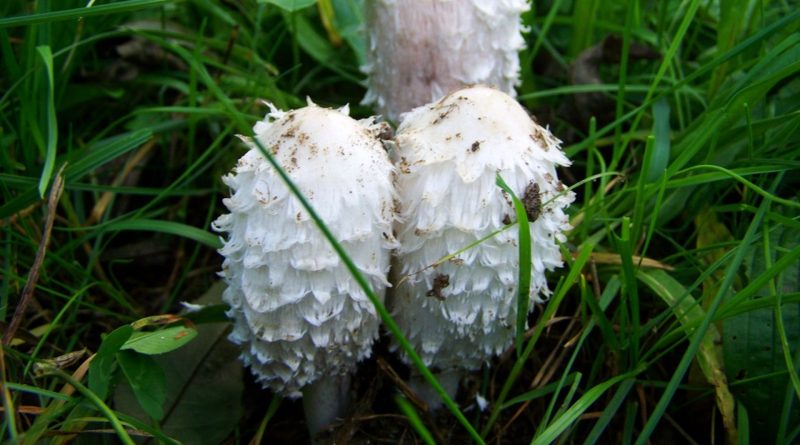Coprinus comatus
Coprinus comatus
Coprinus comatus (O.F. Müll.), Known as Coprin chiomato, Agarico chiomato or Fungo dell’attostro is a fungus that belongs to the Coprinaceae family and is one of the few edible species of the genus Coprinus.
Systematics –
From the systematic point of view it belongs to the Domain Eukaryota, Kingdom Fungi, Division Eumycota, Subdivision Basidiomycotina, Class Agaricomycetes, Order Agaricales, Family Coprinaceae and then to the Genus Coprinus and to the Specie C. comatus.
Etymology –
The epithet Coprinus comes from the Greek κόπρινος kóprinos (from κόπρος cópros dung): pertaining to the dung, which grows on the dung; the specific term comes from the Latin comatus = endowed with foliage, because of the filamentous scales that cover the apex of the hat like a crown.
Geographic Distribution and Habitat –
Coprinus comatus is a common species; fruits from spring to autumn, isolated or in large groups, in fields, vegetable gardens, in land that is still loose or in any case sandy and rich in organic substances; it grows preferably on decaying wood chips, shavings and sawdust.
Description –
The white color of the carpophore, the numerous scales on the cap, the slender and often very developed size (if compared to its congeners), and the stem slightly enlarged at the base (10-20 x 1-2.5 cm, white, silky) ) make this species easily recognizable. When it is an adult the meat becomes deliquescent and it is often possible to observe the black liquid dripping from the hat, hence the name “mushroom of the ink”. The hat is 5-20 cm x 3-7 cm, first ovoid, then conical-campanulate, not very fleshy; the meat is white in the young specimens, deliquescent in the less young specimens with a characteristic smell and pleasant taste.
Cultivation –
Coprinus comatus is easy to grow because it is sufficient to pile timber on the ground that creates the ideal conditions for the growth of this species. This mushroom is still cultivated, as well as for food, even for therapeutic purposes as it is a species with medicinal properties.
Uses and Traditions –
Coprinus comatus is recommended for diabetics due to its hypoglycaemic effect. Furthermore, scientific studies have been carried out to verify the potential role of C. comatus as an antiandrogenic modulator in the treatment of prostate diseases. In addition, other studies have isolated C. comatus compounds with potential antitumor effects for breast cancer. Chinese research has shown that the polysaccharide solutions extracted from C. comatus and administered to rats have the ability to increase the activity of serum lysozyme, fortifying immune system responses. This mushroom is among the best edible mushrooms until the lamellae are white, even if it is cooked immediately after harvesting it, as the color of the lamella changes in a very short time due to the production of the spores. To slow down this process it is advisable to detach the stem, by rotation, at the time of collection.
Preparation Mode –
The Coprino chiomato lends itself to being cooked with butter, salt and pepper, removing it as soon as it begins to brown. However, it is advisable not to consume specimens grown near the city streets because they absorb the polluting substances. According to some consumers this mushroom would be edible even raw; in the absence, however, of certain confirmations, this practice is strongly discouraged. In its consumption attention should be paid to the simultaneous intake of alcoholic beverages as it contains moderate amounts of Coprina, mycotoxin also present in other species of the genus Coprinus (see Coprinus atramentarius) and responsible for the so-called coprinica syndrome, which is not lethal but potentially dangerous in subjects weak for other diseases.
Guido Bissanti
Sources
– Wikipedia, the free encyclopedia.
– Cetto B., 2008. I funghi dal vero, Saturnia, Trento.
– Pignatti S., 1982. Flora of Italy, Edagricole, Bologna.
– Conti F., Abbate G., Alessandrini A., Blasi C. (edited by), 2005. An annotated checklist of the Italian vascular flora, Palombi Editore.
Warning: Pharmaceutical applications and alimurgical uses are indicated for informational purposes only and do not in any way represent a medical prescription; there is therefore no liability for their use for curative, aesthetic or food purposes.


